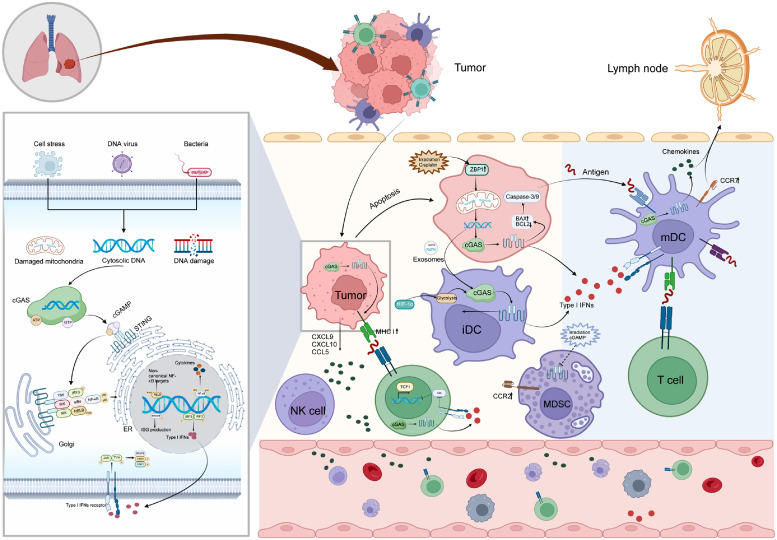肺癌cGAS-STING信号通路的抗肿瘤免疫调控及其在免疫治疗中的应用
Chinese medical journal pulmonary and critical care medicine
Pub Date : 2024-12-01
DOI:10.1016/j.pccm.2024.11.001
引用次数: 0
摘要
先天免疫系统在抵御包括病毒、细菌和真菌在内的外部威胁方面起着主要作用,因此在建立强大的保护方面起着关键作用。最近的研究揭示了它在肿瘤进展中的重要性,尤其是肺癌。在涉及这一复杂过程的各种信号通路中,cGAS-STING通路是一个重要的参与者。环GMP-AMP合成酶(Cyclic GMP-AMP synthase, cGAS)识别游离DNA,激活干扰素基因刺激因子(stimulator of interferon genes, STING),最终导致细胞因子的分泌,对肿瘤的发展起到抑制作用。因此,研究人员对开发针对cGAS-STING通路的抗癌药物越来越感兴趣,这为新的治疗干预提供了有希望的途径。本综述的目的是全面概述正在进行的肺癌领域的cGAS-STING信号通路的研究。主要重点是了解其在肺癌发展中的作用,并评估其作为创新治疗选择目标的可行性。本文章由计算机程序翻译,如有差异,请以英文原文为准。

cGAS-STING signaling pathway in lung cancer: Regulation on antitumor immunity and application in immunotherapy
The innate immune system has a primary role in defending against external threats, encompassing viruses, bacteria, and fungi, thereby playing a pivotal role in establishing robust protection. Recent investigations have shed light on its importance in the progression of tumors, with a particular emphasis on lung cancer. Among the various signaling pathways implicated in this intricate process, the cGAS-STING pathway emerges as a significant participant. Cyclic GMP-AMP synthase (cGAS) discerns free DNA and activates the stimulator of interferon genes (STING), subsequently culminating in the secretion of cytokines and exerting inhibitory effects on tumor development. Consequently, researchers are increasingly interested in creating anticancer drugs that specifically target the cGAS-STING pathway, offering promising avenues for novel therapeutic interventions. The objective of this review is to present a comprehensive overview of the ongoing research on the cGAS-STING signaling pathway within the realm of lung cancer. The primary emphasis is on understanding its involvement in lung cancer development and assessing its viability as a target for innovative therapeutic options.
求助全文
通过发布文献求助,成功后即可免费获取论文全文。
去求助
来源期刊

Chinese medical journal pulmonary and critical care medicine
Critical Care and Intensive Care Medicine, Infectious Diseases, Pulmonary and Respiratory Medicine
CiteScore
0.40
自引率
0.00%
发文量
0
 求助内容:
求助内容: 应助结果提醒方式:
应助结果提醒方式:


